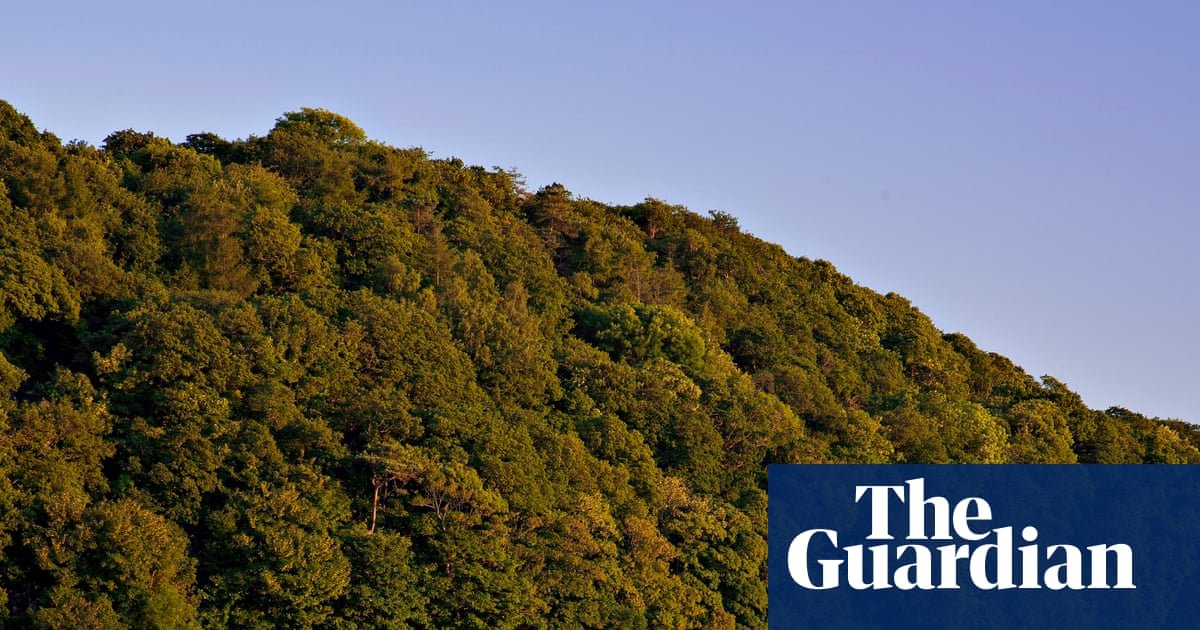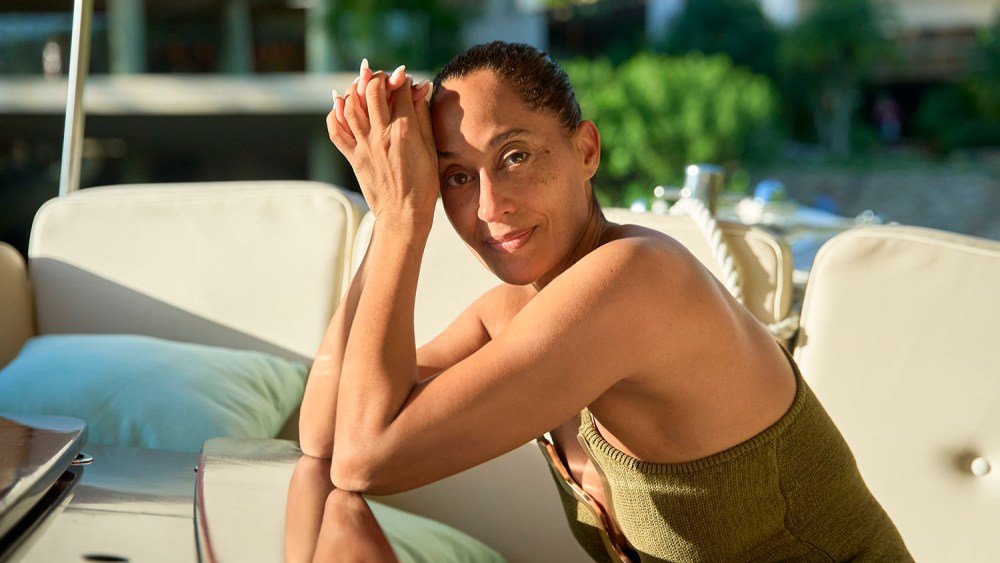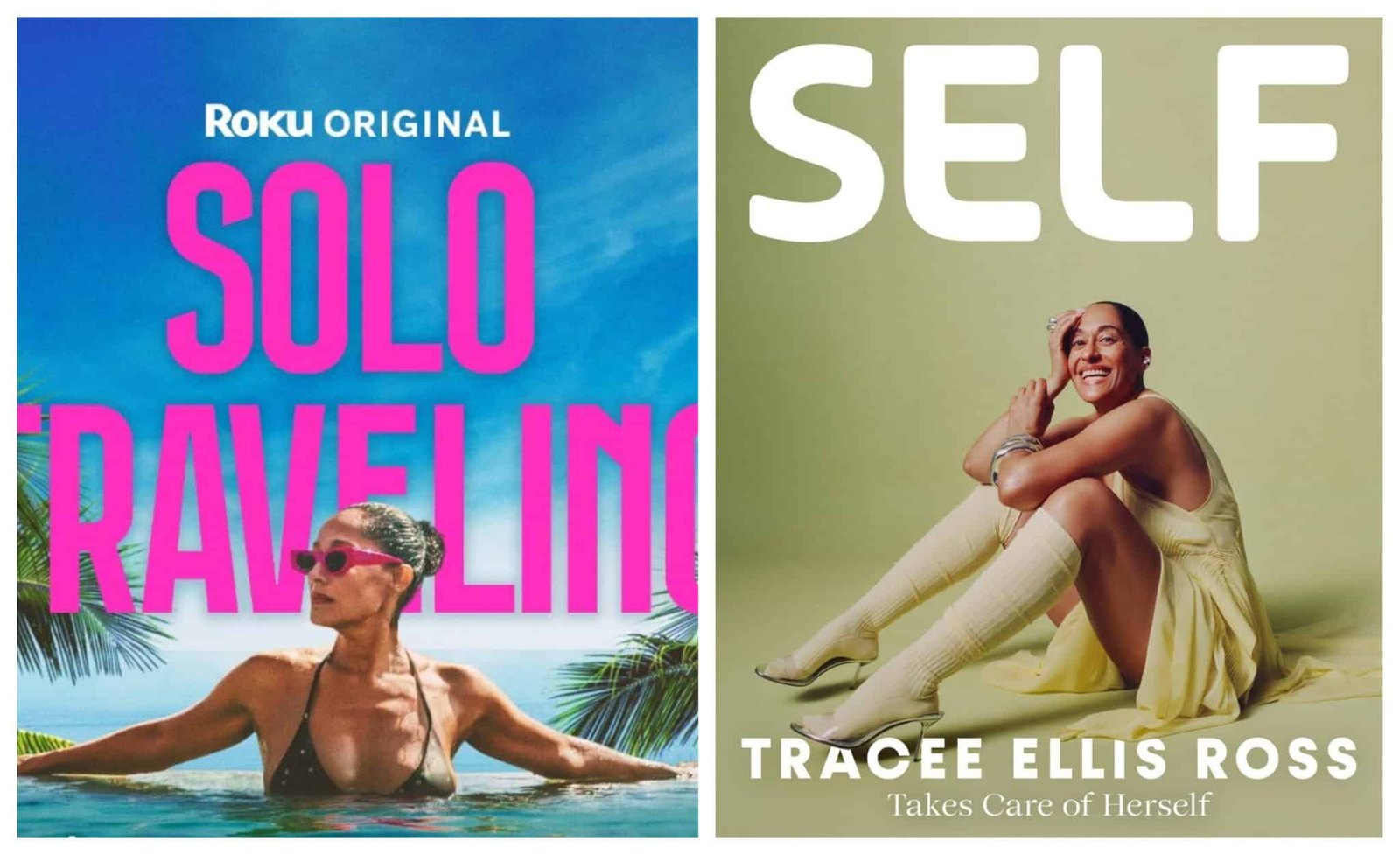Solo Travellers
Where tourists seldom tread, part 18: three seaside towns that defy the tides of fashion | United Kingdom holidays

Tis the season to be beside the seaside – and to hype and critique coastal towns in surveys and rankings. I suppose lists of this year’s “in” and “out” resorts help tourists decide where to go; no point going to Skegness for Michelin-starred food, or to Salcombe for a laugh and cheap beer. Less obvious coastal towns provide more nuanced fare. Perhaps the most alluring spots are those where we don’t forget the sea. These three towns are routinely ranked last resorts or else ignored altogether, but they offer more than stuff to eat, drink, buy and post on socials – and are close to swimmable beaches.
Ayr, Ayrshire
A century ago, Clyde steamers and the Glasgow and South Western Railway took thousands of sunseekers from inland towns to the Ayrshire coast. They came to escape the smoke and noise of industry, breathe in the briny air, and admire the Isle of Arran and tiny Ailsa Craig – from afar or up close on an excursion. The bed and breakfasts on elegant Park Circus (a sweeping crescent lined with cherry trees that blossom red on one side and white on the other) and the Georgian villas on Eglinton Terrace evoke something of the golden days of yore.
It’s easy to imagine parasol-sporting ladies and tall-hatted gents strolling across the Low Green, a large field between the town centre and the beach. This open space – perfect for picnics, kite-flying and impromptu games – and the absence of any clutter on the prom make the seafront unusually peaceful. It’s as if Ayr has refused to become a traditional resort. No tat, no tack, not many tourists. There are places to play on swings and get an ice-cream or a pint, but lovers of amusement arcades and bucket-and-spade shops should probably stay away. On the short block beside the Low Green the buildings are mainly residential – including care homes, that standard fixture of coastal towns.
The beach is a golden sweep about two miles in length, with the old harbour at the north end. Wharves and quays once bustled all along the River Ayr. By the 14th century, this was Scotland’s principal west coast port. In the 18th century, more than 300 ships were moored every year, unloading American tobacco, French wine, Spanish salt, English earthenware and slate from Easdale in the Firth of Lorn. Walk south and you come to the ruins of Greenan Castle, a 16th-century clifftop tower. The sunsets over Arran are life-enhancing. I watched a woman of retirement age do her tai chi moves while keeping her eyes fixed on the island – spiritually separate from the dog-walkers and prom-striders.
Robert Burns was born near Ayr and baptised in the Auld Kirk. In Tam o’ Shanter he writes: “Auld Ayr, wham ne’er a town surpasses, / For honest men and bonny lasses”. A lively pub on the high street, which is set back a good mile from the beach, is named after the poem; it claims to be the oldest in Ayr, but so does the Black Bull on the opposite side of the river. The old bridge (or Auld Brig, if you prefer, which inspired another Burns poem) that takes you across is pedestrianised and a beauty. All the old pubs are enticing but I had my most enjoyable, peaceful beer and dram in the Twa Dugs – also named for a Burns poem. In Ayr’s Waterstones, I found a long-overlooked 1969 Booker-nominated novel by Gordon M Williams, From Scenes Like These, that provided a brutally realistic riposte to Burns-esque takes on rural Scotland. I read it in the boozers, the caffs, on benches.
People in Ayr will tell you the town has declined. They’ll tell you that in nine out of 10 seaside resorts. But this column gets me around, and I can vouch for the town’s general busyness and good looks. Sedate, somewhat stern, bereft of traditional fun stuff, it’s an ideal hideaway for those who want to do beach walks, read or write, and check into small, friendly guest houses.
Things to see and do: Rozelle House Museum, Robert Burns Birthplace Museum, Culzean Castle and Country Park
Bangor, Gwynedd
Bangor, the oldest city in Wales, came second from bottom in the Which? 2025 rankings and absolute bottom in 2024. Perhaps the latter partly anticipated the former. Casually saddle a place with derision and it takes a great effort to shake it off.
As the gateway to the island of Ynys Môn (Anglesey), a university town and former royal capital, Bangor doesn’t need star ratings or hip amenities. The city’s origins stretch back to the founding of a monastery in the early sixth century. A cathedral was later built on the site. For centuries, Bangor was the spiritual and ecclesiastical hub for Gwynedd – a kingdom until the English came a-conquering – but remained a small settlement. Nonetheless, during the first flush of Welsh tourism, at the turn of the 18th and 19th centuries, pleasure steamers from Liverpool brought visitors to see the big church and the wild waters of the Menai Strait.
The boom years came after 1826 with the completion of the Holyhead Road, linking London with Dublin – hitched to the recently created UK by the 1800 Acts of Union. The first major civilian state-funded road building project in Britain since the Roman era, the job was given to Thomas Telford. The road (much of it on the same route as today’s A5) swept through central Bangor, making the former big village a major staging post, and creating the longest high street in Wales. To replace the ferry-shuttles, Telford’s magnificent Menai Suspension Bridge opened in 1826. Two decades later, Robert Stephenson built a tubular bridge to carry the Chester-Holyhead railway across the straits. With communications much improved, Bangor became a proper little port, with shipbuilding, sail making, iron founding, smithing and timber yards, as well as slate yards.
Walk to the natural end of this high street – which turns residential – and you come to the shore, a pier and a large park between neo-Norman Penrhyn Castle and the sea. You don’t have an in-town beach, which might be why some of the raters have a low opinion of Bangor. But the Wales Coast Path and the railway line link Bangor with beaches at Llanfairfechan and Penmaenmawr, eight and 10 miles away respectively. In fact, this might be the best-connected seaside town in the UK, with Eryri national park (Snowdonia), Unesco-listed Caernarfon Castle and Criccieth and the Llŷn peninsula accessible by bus, and of course Anglesey on the doorstep.
Things to see and do: walk the Menai Suspension Bridge, kayaking off Caernarfon, Aber Falls Distillery
Millom, Cumbria
The Cumbrian coast is the most intriguing stretch of littoral in these islands. Backed by the towering, cloud-drawing fells of the national park, the shore is often beneath a blue dome. The towns along it are chapters in British social history. Whitehaven is like a Devon port town without the crowds. Workington is a fascinating ex-industrial town. Nethertown is a hidden hamlet in a spectacular setting.
Millom, at the southern tip of the old county of Cumberland, is a stop on the coast-hugging railway line – a superlative train ride – between Barrow-in-Furness and Sellafield. Its main connection to the nexuses of nuclear war and power are the Millomites who commute south and north for work. Millom once had industry; hematite ore (iron oxide) was found at Hodbarrow in 1856 and mined till 1968, the population swelling to 10,000. Much of the land was transformed into an RSPB nature reserve, centred on the north-west’s largest coastal lagoon; little, common and sandwich terns breed on the islands and you can see ringed plovers, redshanks, great crested grebes and oystercatchers around the wetlands.
Millom is tiny, but has none of the jams and crowds of the villages in the nearby Lakes. The Camra-rated Bear on the Square has real ales, good food and live music. The town has its own fell – Black Combe – and while only a 600-metre Marilyn, its isolation and proximity to the sea make it feel higher. The views from the summit are magnificent – with Blackpool Tower and Scafell Pike visible in clear weather.
The poet Norman Nicholson (1914-1987) was born in Millom and spent almost all his life here, shunning metropolitan literary circles and asserting that the much-maligned “provincial” has more in common with people of other times and lands and consequently “may be all the more aware of that which is enduring in life and society”. The titles of his books reflect the locale: Rock Face (1948); The Shadow of Black Combe (1978); Sea to the West (1981). St George’s church has a stained-glass window designed by Christine Boyce that was inspired by Nicholson’s writing. His house is being restored, while Millom as a whole is undergoing a major rebuild with heritage and health projects afoot as well as a 7.5-mile walking and cycling trail.
For a swim, head to Silecroft by train (one stop) or on foot (3.5 miles); Haverigg beach, though closer, often has pollution warnings.
Things to see and do: Millom Heritage and Arts Centre, Swinside Stone Circle
Further information: Visit Scotland, Visit Cumbria and Visit Wales
Solo Travellers
Kim Jun-ho flirts with shop assistant before upcoming wedding on Solo Travel 4 – CHOSUNBIZ – Chosun Biz
Solo Travellers
Tracee Ellis Ross on Creating ‘Solo Traveling,’ Teases Season 2

Tracee Ellis Ross is known for starring on hit television shows like “Black-ish” and “Girlfriends.” But now, audiences are getting up close and personal with Ross in her hit Roku Original series, “Solo Traveling with Tracee Ellis Ross.” The series debuted to rave reviews last month and quickly became the most-watched unscripted series in Roku history, earning a Season 2 renewal.
Ross has always adored traveling, but it took a moment for the Emmy-nominated actress to realize that fans were flocking to her social media accounts to get a glimpse at her stunning vacations. “I came home from my regular summer trip that I do with my friends every year,” she tells Variety at the Martha’s Vineyard African American Film Festival (MVAAFF), where the series screened to a sold-out crowd on Friday night. “And the guy that was helping me at the airport was like, ‘Girl, every year we wait for your first dip and we wait for your Paris fashion.’ He said, ‘I can’t even wait to see what you’re wearing.’ I said, ‘Are you serious?!’”
Upon realizing that there was an audience that was intrigued by her travels, Ross took the idea and ran with it. “I called my manager and I was like, ‘Is there any world where we could do a travel show that felt like the volume was turned up slightly from my social media?’ she says. “And he was like, ‘I don’t know, let’s figure it out.’” From there, “Solo Traveling with Tracee Eliis Ross” was born. But she had one stipulation: “For me, a lot of it is about the prep and packing, and if we couldn’t show that, then I didn’t want to do it. No one understood that [at] first.’”
Once she got production to buy into the packing segments, though, Ross was on a roll. The first season of “Solo Traveling,” which consists of three episodes, follows Ross (and her iconic wardrobe) as she adventures in Morocco, Mexico and Spain. Like most travel series, it showcases gasp-worthy locations, but what makes the show unique is the actor’s vulnerability, her distinct worldview and how she handles the emotional highs and lows that come with being alone in a new environment.
Solo traveling has been a part of Ross’s life for over 25 years; she took her first voyage in her 20s. “I had finished this show and I had more money than I’ve ever had, which is not a lot,” she recalls. “But I had money, and I thought, ‘I want to go away.’ My friends were working, and no one was available to go with me. And I was like, ‘I’m just going to go.’ I had seen the Pink Sands Resort [in the Bahamas] in Condé Nast Traveler. I don’t remember being frightened or anything like that. I felt safe and comfortable, and I remember it was a great experience.”
That holiday informed the way Ross travels to this day. “I talk about the fact that there are all different kinds of solo travel,” she explains. “Some people travel for adventures. Some people travel to meet people. Some people travel to escape their daily lives. Some people travel to decompress, like I do. Since then, I think I go on at least one solo trip a year if not two.”
While Ross is an experienced traveler in real life, it took a bit of work to get the tone of the show just right. “It was a delicate balance,” Ross explains. “Some of the first cuts that came back, they filled them in with music, and I was like, ‘No.’ It was losing the intimacy of some of these quiet, solitary moments.” Ross also notes that she travels with a skeleton crew to film the series. “I made a conscious decision not to use a stylist or hair and makeup. I was like, ‘That’s not how I travel. So it should look the way I travel.’ That was important to me,” she says. “And I found the show refreshing when I watched it.”
Safety and anxiety are barriers for many people who fear solo traveling, especially women. For Ross, safety is imperative, as is deciding what you want from your experience. “Once you determine that for yourself, you can figure out where that would be,” she says. “I like to remind people that you should ask yourself if there are parts of your identity that are the most empowered, beautiful parts of you, but perhaps might leave you vulnerable in other environments, whether that’s being LGBTQ, non-binary, a Black woman, differently abled, whatever those things are. And it might not even be those kinds of questions. It might be that I don’t like rain.”
Still, even with tons of preparation (and packing for any and all scenarios), Ross reminds us all that sometimes you can’t anticipate what might happen. For example, during her trip to Spain for episode 3, Ross had a horrific bout of food poisoning and was unable to film or even leave her hotel bed, but she wanted to keep the cameras rolling. “There was nothing I could do about it because we had a short window for shooting,” she says. “That was why I left that crying bit in. Because not only did I feel physically bad, but I felt like I was disappointing everybody. But that was what we had. And it was okay with me. We had to edit around the story because no one wants to hear the graphic behind-the-scenes. It was so fucking awful. Oh my God! But I felt it was important to leave in. It is part of what happens. Things don’t always go as planned.”
Solo traveling has also changed the way Ross views herself. Sprinkled throughout the series are gut-wrenchingly honest video diaries where Ross gets candid and emotional about loneliness and singleness. “What I love about how the show is resonating is the intention of the show,” she says. “It’s not about travel, but can you be yourself, by yourself, out in the world? Can you be who you are? It’s taken me years to discover who I am, then have the courage to be that person, and even more to live as that person. This show is an expression of living as that person. And it’s about knowing oneself, making choices that truly honor who you are and what you know about yourself. The fact that that’s what’s resonating — the sense of being responsible for your own happiness — is very moving to me.”
With fans so eager to voyage across the globe again with Ross in Season 2, she’s already considering where she’ll end up next. “When we did this season, I gave a long list of all the places I wanted to go, so there’s still a whole list of places,” she teases. “I have a dream list. I’d love to hear from other people and get new ideas. I want you to go to all the places, and we want to go along with you.”
Solo Travellers
Tracee Ellis Ross Covers SELF / Scores Season 2 of ‘Solo Travelling’ After Breaking Roku Records

Tracee Ellis Ross is booked, blessed, and back for round two! Roku Originals just greenlit Season 2 of ‘Solo Travelling with Tracee Ellis Ross’ after the debut season shattered viewership records, becoming the most-watched unscripted Roku Original ever within its first two weeks.
Full details below…
From Morocco to Mexico to Spain, Season 1 gave us stunning views, soulful reflections and signature Ross hilarity. Now, the style queen and self-love advocate is packing her luggage and hitting new global stops in search of joy, growth, and maybe a perfect caftan or two.
Speaking on the Season 2 news, Ross said:
“’Solo Traveling with Tracee Ellis Ross’ is the #1 unscripted show in Roku history, and now we get to do it all again with a Season 2! Thank you to Roku for your incredible partnership and care with my show, and to the amazing team that made it all possible. But the biggest thank you goes to everyone who has watched, embraced, and shared my journeys. The way the show is resonating feels truly special—all of the comments, the conversations, the connection… my cup runneth over. So here’s to all the solo travelers out there, the aspiring solo travelers, those who share in the joy of solo travel by watching me do it and, of course, to my fellow over-packers! There’s so much more to see and do—the world is our oyster! I can’t wait to see where I’ll be going next and to bring all of you along.”
All episodes stream for free exclusively on the Roku Channel.
In other Tracee Ellis Ross news, the star covers the latest issue of SELF Magazine. Check it out below:
-

 Brand Stories3 weeks ago
Brand Stories3 weeks agoBloom Hotels: A Modern Vision of Hospitality Redefining Travel
-

 Brand Stories2 weeks ago
Brand Stories2 weeks agoCheQin.ai sets a new standard for hotel booking with its AI capabilities: empowering travellers to bargain, choose the best, and book with clarity.
-

 Destinations & Things To Do3 weeks ago
Destinations & Things To Do3 weeks agoUntouched Destinations: Stunning Hidden Gems You Must Visit
-

 Destinations & Things To Do2 weeks ago
Destinations & Things To Do2 weeks agoThis Hidden Beach in India Glows at Night-But Only in One Secret Season
-

 AI in Travel3 weeks ago
AI in Travel3 weeks agoAI Travel Revolution: Must-Have Guide to the Best Experience
-

 Brand Stories1 month ago
Brand Stories1 month agoVoice AI Startup ElevenLabs Plans to Add Hubs Around the World
-

 Brand Stories4 weeks ago
Brand Stories4 weeks agoHow Elon Musk’s rogue Grok chatbot became a cautionary AI tale
-

 Brand Stories2 weeks ago
Brand Stories2 weeks agoContactless Hospitality: Why Remote Management Technology Is Key to Seamless Guest Experiences
-

 Asia Travel Pulse1 month ago
Asia Travel Pulse1 month agoLooking For Adventure In Asia? Here Are 7 Epic Destinations You Need To Experience At Least Once – Zee News
-

 AI in Travel1 month ago
AI in Travel1 month ago‘Will AI take my job?’ A trip to a Beijing fortune-telling bar to see what lies ahead | China


You must be logged in to post a comment Login